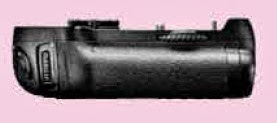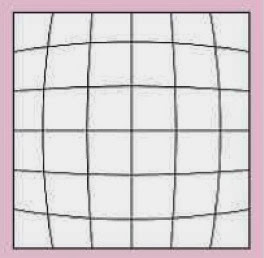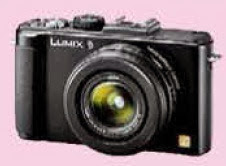Get to know; Online Photography Courses Jargons!
APS-C: Describes a imaging sensor size or a camera using this size of sensor.
APS-C stands for Advance Photo System, type C . Sensor size 15.7 x 23.7mm approximately. Varies slightly between manufacturers.
Aperture: Set of metal blades that control the amount of light entering a lens (same as Diaphragm).
AVCHD: Advanced Video Coding High Definition. A format for digital recording and playback.
AF Sensor: A sensor used in achieving autofocus.
Buffer: Temporary storage of data before the images are written to the memory card.
Bridge camera: Describes a camera that fits between a compact and a D-SLR. Also known as "Prosumer camera".
Ballhead: (Used on a tripod). Performs similar functions as a pan
and tilt head but uses a central ball as a pivot to allow for camera
movements.

Battery Grip: A device that attaches to the base of a D-SLR. The battery grip, not only provides better grip for vertical shooting, but uses extra batteries to supply power to the camera when the camera battery dies down. In some cases, it helps to increase the frames-per-second firing rate.
Burst mode: A camera mode that allows continuous firing.

Barrel distortion: The outward bulging of straight lines in the centre of the frame due to lens imperfection.
Bit: Refers to a binary digit – the smallest unit of computer data, either 0 or 1.
Bit depth: A measure of the number of possible colours/tones in an image. Our images are basically formed using the three primary colours (also known as channels), red, green and blue. JPEG
files are 8-bits per channel (which is the same thing as 24-bit. When we say 24-bit, we should not say “per channel”). Raw files can be 12-bits per channel or 14-bits per channel, that is
36-bit or 42-bit respectively.
Bracketing: A method of taking three or more shots in succession (using different exposures), with a hope that at least one of them will be accurate. We also bracket when shooting for HDR
imaging. Bracketing could also be for White Balance and ISO.
CCD/CMOS: Types of imaging sensors. CCD stands for Charged Coupled Device. CMOS stands for Complementary Metal-Oxide Semiconductor.

Compact camera: Describes a small, point-and-shoot type of camera.
Center-weighted meter: One of the in-built exposure meter that places greater emphasises on the central area of the frame. The user generally has the choice of selecting the area (8, 12,
20mm circle at the center).
Circular Polariser (CPL): A polarising filter designed to be used with digital cameras (as well as certain film cameras). A CPL prevents secondary polarisation of light at the reflex mirror, thereby preventing exposure/focussing error.
Contrast-detection AF: A system of auto-focussing wherein the camera uses contrast as the basis of evaluating correct focus.
Chromatic Aberration: The inability of all the three primary colours (Red, Green, Blue) to focus on the same plane. This manifests itself in the form of colour fringing at the edges and is
most noticeable against high-contrast elements in the picture.
Clipping: Overexposing of highlights. Underexposing of shadows.
Crop factor: A factor by which the focal length of a lens needs to be multiplied to get the equivalent focal length of a full frame 35mm sensor
Close-up lens/filter: A magnifying glass that is attached to the front of a lens to make the lens focus closer. The magnifications are described by the term ‘dioptre’. Eg. +1, +2, +3 etc.
CMYK: Cyan, Magenta, Yellow, Black. These are the colours used in books/ magazines printing.
Colour temperature: A measure of the colour of light.
D-SLR: Digital Single Lens Reflex camera. An interchangeable lens camera that uses a reflex mirror for viewing.
Diaphragm: Set of metal blades that control the amount of light entering a lens (same as Aperture)
Depth-of-field: The zone of sharpness in a photo.
DOF Preview Button: A button on the camera that allows you to visually check the depth-of-field.
Dynamic Range: The range of brightness that can be captured by a film or digital imaging sensor. This range is much lower than the dynamic range of our eyes.
Digital zoom: In-camera electronic enlargement of the central area of a frame. Use of digital zoom should be avoided if high image quality is required. The same effect can be achieved during post-processing, by cropping an area and enlarging it.
DPI: Dots Per Inch. A measure of print resolution.
Diffuser: (1) A camera filter that softens an image (generally used with portraits). (2) Any material that softens the light from a ‘hard light source’ like the sun or a flashgun. Placed between the light source and the subject.
Exposure meter: A light-meter that recommends the aperture and shutter speed for a given lighting condition. An exposure meter can be built into the camera or can be an external hand-held
variety. To use any light meter, you first need to set the ISO sensitivity.
EVF: Short form of Electronic View Finder.
Evaluative meter: One of the in-built exposure meter that divides the frame into various segments and based on thousands of pre-set exposures built into the camera’s memory, selects a suitable exposure depending on the lighting conditions and the set ISO sensitivity. Also known as Segmented/ Matrix meter.
Frame rate: A measure of how many frames a camera can fire in one second.
Flare: Image degrading, unwanted reflection of light within the lens
Full-frame: Denotes a camera/imaging sensor that is the same size as a 35mm film (24 x 36mm).
Focal plane: Describes the location of the film/imaging sensor within the camera.
Focal plane shutter: A type of shutter used in SLRs/D-SLRs. This shutter is placed in front of the film/sensor.
Focal length: In a simple convex lens (a magnifying glass for example) and with light coming from infinity – the distance between the vertical centre of the lens and the point where the
light rays meet. Focal length tells us how much of the scene will be covered by the lens and what the magnification will be.
Firmware: A downloadable software offered by the camera manufacturer. Generally used to upgrade/improve on a camera’s performance.
Filter: (As applicable to a camera) A thin glass/plastic or gelatine placed in front of the lens to modify the colour/ quality/ quantity of light entering the lens.
H.264: A standard for video compression.
Hardware: (In terms of computers) The physical elements that make up a computer system.
HDR Imaging: High Dynamic Range Imaging. A technique of extending the dynamic range beyond the normal capacity of the imaging sensor. Three (or more) shots are taken from various areas
of the scene (one from the shadows, one from the highlights and one from the midtones) and then combined in a computer program to create a picture with good detail in shadows as well as highlights. HDR technique is used when the lighting contrast is very high.
Histogram: A graph showing the distribution of tones in an image. The horizontal axis shows the gradation of tones from the darkest to the left, to the brightest at the right. The vertical axis shows how many pixels are there in any particular tone.
HSB: Hue, Saturation, Brightness. The standard colour model for adjusting colour in image editing programs.
Intervalometer: A device that allows you to automatically take pictures at fixed intervals.
IS: Image Stabilizer– a feature that eliminates/reduces the effect of handshake (Originally a Canon Moniker).
ILCC: Interchangeable Lens Compact Camera. Describes a mirror-less digital camera with interchangeable lenses.
Incident Light Meter: A hand-held light meter that reads the amount of light incident to (falling on) the subject.
Interpolation: (As related to digital imaging) The act of introducing new elements (pixels) in an image.
JPEG: Joint Photographic Experts Group – a compressed (data losing) file format.
Jitter: Another way to describe the effects of hand-shake.
Kelvin: A unit of measurement of colour temperature based on absolute zero.
Lateral CA: Chromatic aberration in which all the colours are in focus in the same plane but are not placed along the optical axis.
Longitudenal CA: Chromatic aberration in which different colours do not focus at the same point.
Leaf shutter: A type of shutter used in range-finder cameras. Situated between the lens elements.
Linear Polariser (PL): A polarising filter designed to be used with film cameras that do not use a ‘light-splitter’ in the exposure metering system.
Live View: A camera feature that allows the LCD to be used as a viewfinder.
LCD: Liquid Crystal Display – the display (monitor) at the rear of digital cameras.
Luminosity: Brightness of colour, without considering hue or saturation.
LZW: An option while saving TIFF files. LZW compresses the file size without loss of data. LZW actually stands for – Lempel – Ziv – Welch, the names of three persons who devised it.
Matrix meter: See Evaluative meter.
Multi-segmented meter: See Evaluative meter.
Micro Four Thirds: A sensor format jointly created by Kodak, Olympus and Panasonic. Sensor size approx. 13 x 17mm.
MOV: A common multi-media format for saving movies and other video films.
Macro lens: A special lens designed for life-size (1:1) photography.
Memory card: The removable module within a digital camera, that stores the images.
Mid-tone: Average tone. Neither too dark or too light; an in-between tone.
Noise: The digital equivalent of film grain. Noise is caused mainly due to underexposure.
Normal lens: A lens having a focal length equivalent to the diagonal of the given format.
Optical Viewfinder: The normal viewing device in a camera, through which you view and frame a subject. It uses optical glass as opposed to Electronic Viewfinder that uses electronic circuitry to boost the information within.
Pan and Tilt head: A camera support used along with a tripod, that allows the camera to be tilted (up/down) and panned sideways. It is different from a ‘ballhead’ in that it uses separate levers to control the pan and tilt.
Perspective Control/Tilt-Shift lens: A special lens designed for correcting perspective distortion
Polariser: A filter that cuts off polarised light from entering the lens. This filter, when used correctly, has the ability to darken blue sky, cut reflections from water, glass, painted metal, wood, paper etc.
Phase-detection AF: A method of autofocussing that splits the image in two and compares the images for similar light intensity patterns
Perspective: The size relationship between the foreground, mid-ground and background objects in a photo.
Pin cushion distortion: The inward pulling of straight lines in the centre of the frame due to lens imperfection.
Prosumer camera: Same as Bridge camera.
Partial metering: Found mostly in Canon cameras, roughly 10-15% of the frame is measured in the centre.
Pixel: The building block of any digital image; the smallest unit of any digital image. Short form of Picture Element.
Plug-in: A software designed to supplement a computer program’s performance or features. Generally created by third parties.
PPI: Pixels Per Inch. A measure of image resolution (applies to images on the computer screen).
Raw: Refers to the data received directly from the imaging sensor, without any image parameters applied to it.
Reflected Light meter: A light meter that reads the amount of light reflected from a subject. Light meters built into cameras are reflected light meters.
RGB: The primary colours (Red, Green, Blue) of the additive colour system.
RAID: Redundant Array of Independent Disks. A stack of hard disks, functioning as one.
Reflector: Any material that can reflect some light back onto a subject.
Resampling: The act of increasing or decreasing the resolution of an image by interpolation.
Sensor: (Imaging Sensor): Digital equivalent of film.
Spot meter: One of the in-built exposure meter that reads a very small area of the frame (typically 3-5% area). External, hand-held 1-degree spot meters are also available.
Softbox: A type of light modifier, generally used with studio lights.
Software: A computer program that instructs a computer what to do, when to do and how to do.
TIFF: Tagged Image File Format – a lossless file format.
Telephoto lens: A lens having an angle-of-view narrower than that of a Normal lens (Eg. 70, 85, 100, 200, 300mm etc).
Teleconverter: A lens that fits between the camera body and the main lens. Its job is to increase the focal length, thereby offering a larger image.
Umbrella: A light modifier in the shape of an umbrella.
VR: Stands for Vibration Reduction – a feature that eliminates/reduces the effect of hand-shake.
White Balance: A process of getting rid of colour casts. White objects should appear white in prints (there could be several reasons why that may not be so). Once white objects appear
white, all other colours appear without any colour casts.
Wide-angle lens: A lens having an angle-of-view greater than that of a Normal lens (Eg. 35, 28, 24, 20mm etc).
X-sync speed: Shutter speeds compatible with electronic flash.
X-sync speed: Shutter speeds compatible with electronic flash
































COMMENTS